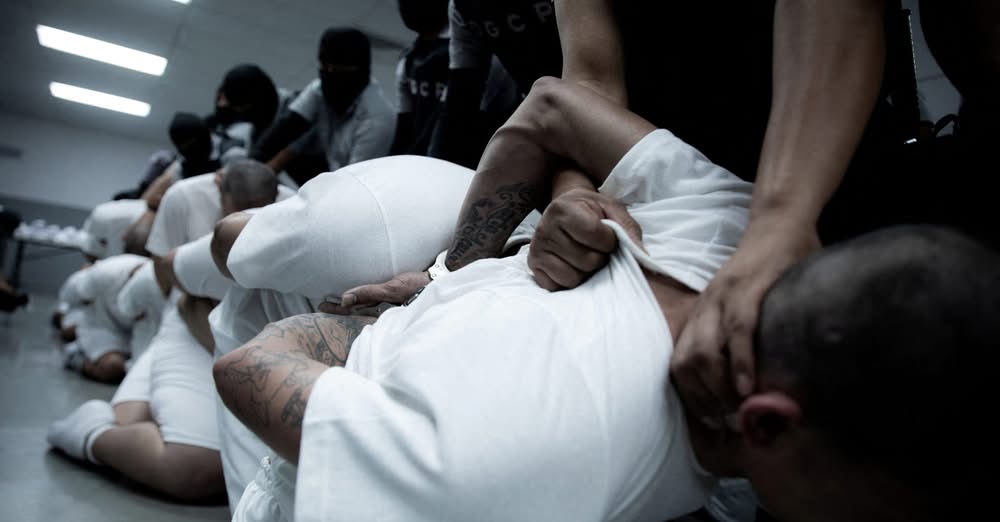
In a troubling twist of misinterpretation and missed justice, a Venezuelan soccer player seeking asylum in the United States was deported to El Salvador under suspicion of gang affiliation—based on a tattoo that was, according to his attorney, nothing more than a tribute to his favorite soccer team.
Jerce Reyes Barrios, 36, had been in the U.S. awaiting a decision on his asylum application when federal immigration agents arrested him last September. Their justification? A tattoo they claimed linked him to the feared Venezuelan gang Tren de Aragua.
But immigration attorney Linette Tobin, who represents Reyes Barrios, says the agents got it completely wrong.
In a sworn affidavit filed this week, Tobin explained that the tattoo—depicting a crown above a soccer ball with a rosary and the word “Dios” (Spanish for “God”)—was inspired by the logo of Real Madrid, Reyes Barrios’ beloved soccer team. “He has never been arrested or charged with a crime,” Tobin emphasized.
Yet despite a clean record and credible supporting documentation, including employment references and even a statement from the tattoo artist clarifying the design’s origin, Reyes Barrios was held in maximum security and later deported to El Salvador on March 15. His family and legal team have not heard from him since.
A Deportation Shrouded in Secrecy
Reyes Barrios was reportedly one of over 200 Venezuelans targeted in a series of deportations under the Trump administration. These removals were carried out using the rarely invoked Alien Enemies Act and were part of an agreement with Salvadoran President Nayib Bukele to house detainees in a notoriously harsh prison in El Salvador.
The Department of Homeland Security (DHS) has yet to make public any concrete evidence linking the deportees to criminal gangs like Tren de Aragua, a Venezuelan criminal group with international reach. DHS spokesperson Tricia McLaughlin told the New York Post that officials remain “confident” in their assessment of Reyes Barrios’ gang ties, claiming it was based on “more than one tattoo.” But Tobin disputes that claim, asserting there’s no credible link and that the tattoos are innocuous in meaning.
The Power—and Danger—of Misinterpretation
One of the most cited pieces of “evidence” DHS agents used against Reyes Barrios was a social media post in which he held up a hand gesture made with his thumb, index finger, and pinkie extended. According to Tobin, agents viewed the photo as confirmation of gang membership.
But in reality, the sign is commonly known in American Sign Language as “I love you.” It’s also widely used in rock and roll culture and is often flashed by musicians and fans alike.
“It’s a universal sign of positivity,” Tobin wrote, adding that mistaking it for a gang signal was not just incorrect—it was harmful.
A Life Uprooted
Before arriving in the U.S., Reyes Barrios lived in Venezuela where he played soccer professionally and worked as a coach for children. According to Tobin, he fled his home country after he was allegedly detained and tortured in a secret facility for participating in public protests against President Nicolás Maduro.
Reyes Barrios later made his way to Mexico and registered through the CBP One app—a tool implemented under the Biden administration to allow migrants to schedule asylum appointments. But when he showed up for his scheduled appointment at the U.S. border, he was detained instead of being allowed to plead his case.
Despite presenting officials with evidence that he had no criminal record, a stable employment history, and a history of community involvement, Reyes Barrios remained in detention. He was eventually moved from San Diego to another facility in Texas without notice, and then abruptly deported to El Salvador.
His final asylum hearing was scheduled for April 17 in San Diego, but it is unclear whether that proceeding will move forward in his absence—or whether it will matter.
A Larger Crisis of Misidentification
Reyes Barrios’ story is part of a growing pattern of migrants being criminalized based on appearance, misunderstood symbols, or unverified digital footprints. In a politically charged atmosphere where immigration policies can shift drastically from one administration to another, such misjudgments carry devastating consequences.
The use of visual markers—like tattoos—as primary evidence of gang involvement is a controversial practice. While certain symbols may be associated with gang activity in specific contexts, they are not universally indicative of criminal behavior. In Latin American culture, tattoos are often personal expressions of faith, family, or fandom—not necessarily declarations of allegiance to violence.
Unfortunately, Reyes Barrios now finds himself in a dangerous limbo. Deported to a country he has no ties to, held in a prison known for violence, and cut off from his legal support network, his fate hangs in uncertainty.
As the legal community calls for more transparency and accountability in the handling of asylum cases, stories like this raise urgent questions about the reliability of the U.S. immigration system. Should a man’s love for soccer and a misunderstood tattoo be enough to justify ending his dreams and potentially endangering his life?
Reyes Barrios’ family still hopes for answers—and a chance to bring him back to safety.





